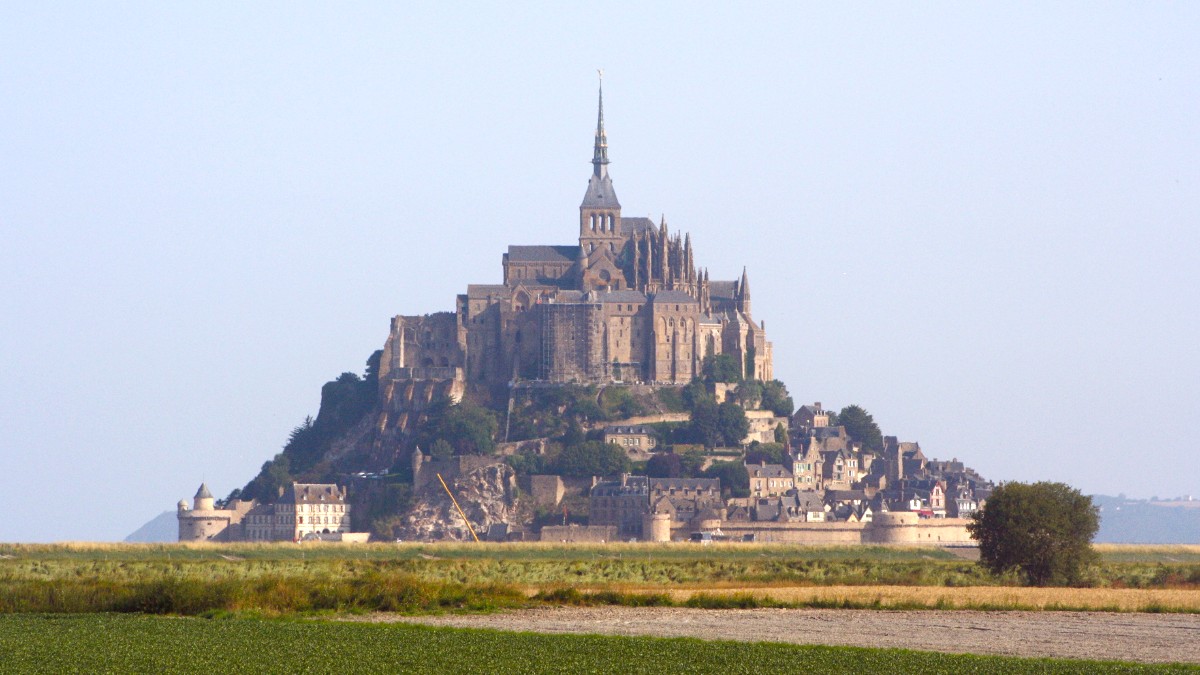
Normandy, France
Spring (April-May) brings mild temperatures, typically 10-15°C (50-59°F). Rainfall is moderate, with occasional showers. Humidity levels are lower than in summer. Days lengthen, allowing more daylight for exploration. The landscape transforms with fresh greenery.
Autumn (September-October) brings mild to cool temperatures, averaging 10-17°C (50-63°F). Rainfall increases, especially towards late October. The humidity starts to drop. The autumn light often provides a beautiful, soft glow, ideal for photography. Fall foliage appears in the surrounding countryside.
High Season (July-August) provides the warmest weather and the longest daylight hours. All attractions, restaurants, and shops operate at full capacity. The bay walks are most comfortable during these warmer months. Expect heavy crowding, long queues, and peak accommodation prices.
Shoulder Season (April-June & September-October) weather conditions are pleasant, often combining mild temperatures with less intense summer heat. Crowds are fewer, allowing a more relaxed experience. Accommodation prices are more reasonable. The light for photography is often softer and more atmospheric. Weather can be variable, with a higher chance of rain or strong winds.
The most prominent weather consideration.
Known as "spring tides," these occur a few days after the full and new moons. During these events, the causeway can submerge for a few hours. Always check official tide schedules. If you wish to walk the bay, only do so with a licensed guide.
Tides come in rapidly, and quicksands are present. Never attempt bay walks without a certified guide.
A constant factor due to exposed environment.
Wind speeds can be high, especially on the causeway and upper Abbey levels. This makes cold days feel colder and can be bothersome on mild days.
Plan for wind by packing appropriate outerwear. A windproof jacket helps maintain comfort.
November-March brings unique experiences.
This period offers the fewest crowds and lowest accommodation prices, allowing quiet reflection within the Abbey. The Mont has an unique, often dramatic, atmosphere when shrouded in mist or under a crisp winter sky.
Cold weather, frequent rain, strong winds, and shorter daylight hours define this period. Some restaurants or shops might close or operate on a reduced schedule.
Arrive right at opening time or in the late afternoon (2-3 hours before closing) to avoid peak crowds. This allows a more contemplative experience within the sacred spaces and fewer people obstructing views. Weekdays during shoulder seasons (April-June, September-October) typically present a calmer environment.
To witness the most dramatic tidal changes, plan your visit for a few days after the full and new moons. Consult a tide calendar well in advance, as these events are predictable and often draw crowds. Position yourself on the causeway or the mainland viewing areas for the best perspective of the Mont becoming an island.
Guided walks on the bay are best undertaken during the warmer months (June-September).
Ground can be muddy and wet, so Waterproof shoes or old sneakers prepare you.
Always join a licensed guide for safety; they understand the rapidly changing tides and quicksand.
Early morning or late afternoon during shoulder seasons provides the best light.
Dawn over the bay or dusk when the Mont is illuminated offers spectacular opportunities.
Mont Saint-Michel offers options for various spending levels. Daily costs vary considerably based on travel preferences.
The official currency of France is the Euro (€, EUR). ATMs are widely available in larger towns near Mont Saint-Michel, like Pontorson and Avranches. On Mont Saint-Michel itself, ATMs are limited, so plan to withdraw cash on the mainland.
These estimates include accommodation, meals, local transportation, and attraction entry. Costs vary based on season and demand.
These are approximate and fluctuate based on season, demand, and booking lead time.